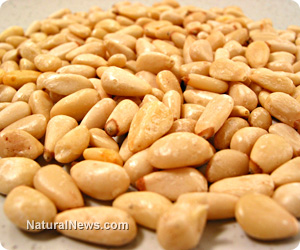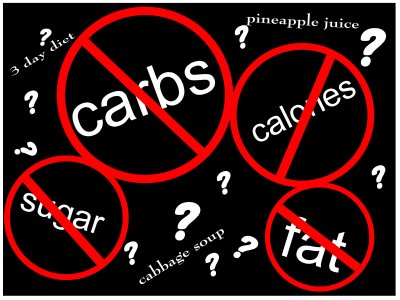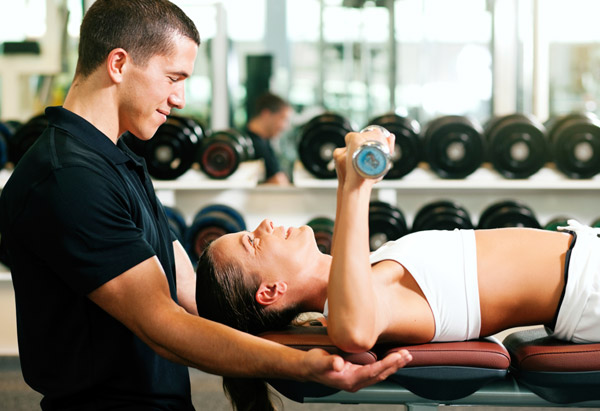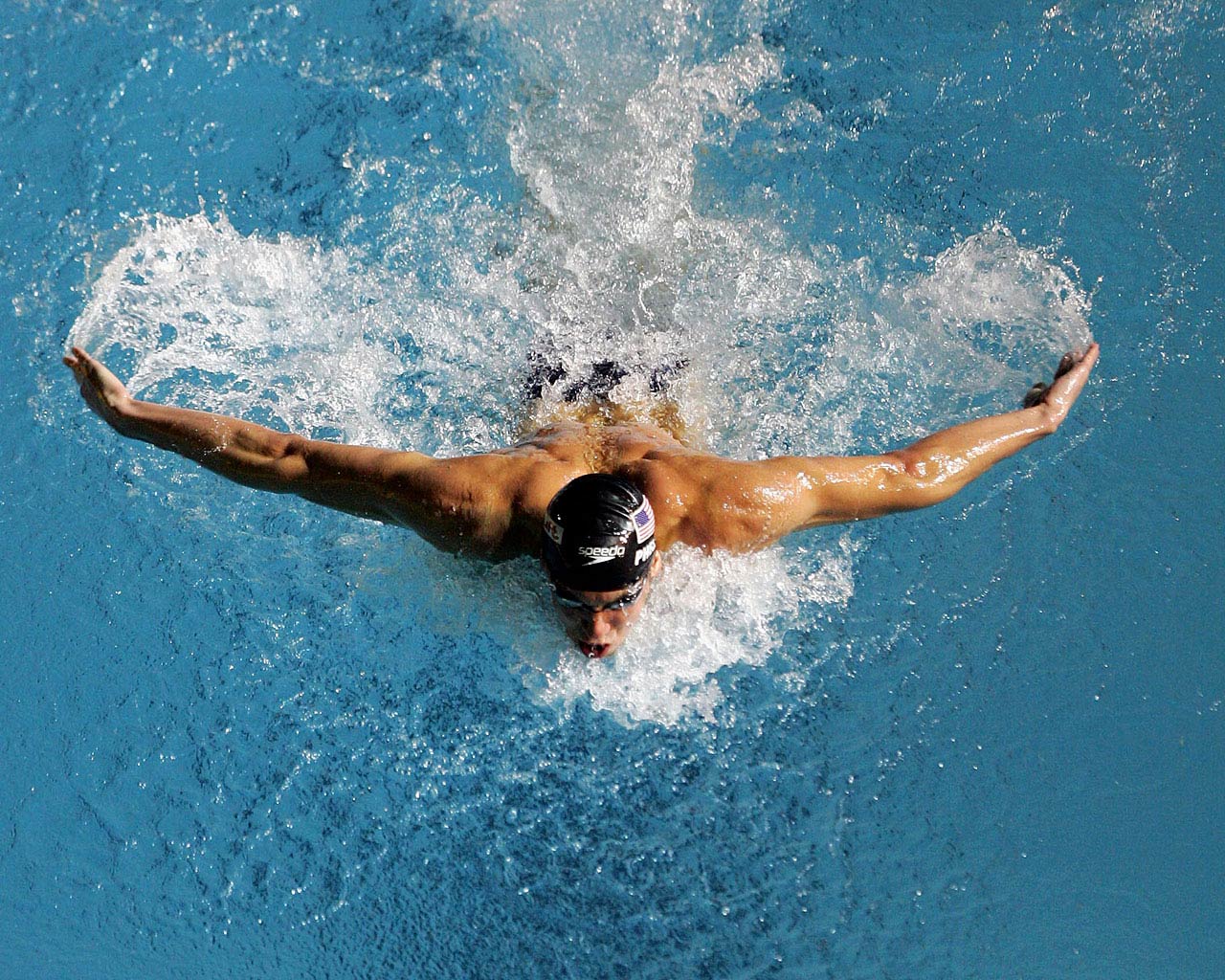The pure mathematics of weight loss is simple—eat less, move more—but if
knowing that were all it took, everyone would be in great shape. Los
Angeles–based personal trainers Bob Harper and Jillian Michaels have
been helping to define the bodies of celebrities like Gwyneth Paltrow,
Ellen DeGeneres, and Laura Dern, and they've also changed the lives of
contestants on NBC's weight loss reality show,
. Michaels is co-owner of Sky Sport and Spa. Here's what they know about diet and fitness success.
Losing weight and keeping it off, says Jillian Michaels, "requires a
holistic approach that combines proper diet, good workouts, knowing why
you overeat, and understanding how to push yourself toward change." The
desire to change, she adds, really has to come from inside. "Sometimes
you've got to have hit bottom, like realizing you can't play tag with
your kids without getting out of breath," Jillian says. "If you're not
ready for something new, no matter what you try, it's not going to
work."
Yes, everyone is built differently, and some of us gain weight more
easily than others. But "to say, 'I can't make any improvement because I
have fat genes' is b.s.," says Jillian. "It's not true, and it's
disempowering. No matter what your genes are, you have the ability to
make the right choices about eating and exercise."
The main thing is to make peace with your body before you try to
change it, says Bob Harper. "Okay, you're overweight. But how great that
you've decided to do something about it! Accepting where you are at the
moment takes away the white-knuckle feeling that can sabotage you fast:
'I've got to lose weight! I've got to! Damn, I didn't lose any weight
today. I've failed! Forget it, I won't even try anymore.'"
Before you lift a toe, do some legwork. "You can learn about nutrition and diets on Web sites like howstuffworks.com or through books like
,"
says Bob. Preparation helps you train wisely, too. "You can't just jump
into an exercise program without knowing what you're doing," says
Jillian. "At best you'll waste your time; at worst you could get
injured." Find a beginner class or trainer to teach you the nuts and
bolts. Or use books, fitness magazines, and videos. "Crunch Fitness puts
out some awesome books that show all the basics," she says, "including
, by Scott G. Duke."
"It's essential," Jillian insists. "You need to track what you eat
in detail. Not 'peanuts,' but how many peanuts. What time of day? And
why are you eating just then? Writing it down makes you accountable and
aware, and it helps you identify the mistakes you're making. Maybe your
blood sugar is fluctuating through the day. Maybe you're skipping meals.
Maybe you feel like you're not eating that much but, when you add it
up, it comes to 2,500 calories a day."
6. Experiment to find your own diet.
Some foods are obvious no-no's: trans fats, processed food, white
sugar, and excessive alcohol. Beyond that, though, everyone's body is
different, and just because a diet book is on the best-seller list
doesn't mean its program will work for you. "Some people thrive on a
strictly high-protein diet, while others do great with fruits, grains,
and beans," says Jillian. "You've got to ask yourself questions: When I
eat meat, do I feel sluggish or agitated? When I eat fruit, do I feel
satiated? Sometimes it takes a lot of trial and error to find the right
combination of foods. And as a trainer, I've learned that you also have
to take human frailty into account. If you can't bear the idea of giving
up bread, choose whole grain and try to eat it with some protein." The
protein, she explains, will slow the breakdown of the bread so its carbs
won't cause your blood sugar to spike and then—as so often
happens—crash, making you hungry again for something starchy.
7. Don't ever starve yourself.
Dieting means cutting calories, but less isn't always more. "One of
the biggest misconceptions I've seen—including among the women I'm
training on the show—is that the less you eat, the more weight you'll
lose," says Jillian. "Maybe at first. But your body will think you're
dying from lack of food, and your metabolism will adjust by slowing to a
crawl." Most women should never eat less than 1,200 calories a day.
8. Outsmart your exercise excuses.
A routine you'll actually stick to has to have elements that appeal
to you. If you love being outdoors, try hiking or walking somewhere
inspiring—a beach, a park, a historic neighborhood. You also need to
assess what motivates you. If you get competitive and push yourself
more when you're around others, join a gym, take a class, or play a
sport like tennis or softball. If you're good at finding reasons to skip
a session, make a commitment to do something with friends, so you can't
back out without letting everyone down.
9. Don't forget the weights.
The best fitness routine includes a combination of
heart-rate-boosting exercise like jogging or stair-stepping and
resistance training, which means either lifting weights or using gym
equipment. Cardio burns the fat; resistance training creates shape and
increases muscle mass—and the more muscle you have, the faster your
metabolism runs, even when you're resting.
10. Start with baby steps.
Working out for 20 minutes a day isn't enough to get you buff, but
"even that will start speeding up your metabolism," says Jillian. "Walk
to a local restaurant during lunch hour, walk the dog, walk to the
convenience store. The idea is to get moving."
Bob couldn't agree more. "Thinking, I can't get in shape because I
don't have two hours a day to exercise is just another excuse for doing
nothing," he says. "Start small, because small can only get bigger.
Starting big means burning out, blowing out, getting hurt—another reason
to stop."
11. Tough it out.
Accept that the early days of a fitness program may not be fun.
"You've just got to push through," says Jillian. "Your body is an
amazing machine. After two weeks, the walk that used to have you sucking
wind won't even tire you. It took only that long for the women on The
Biggest Loser to discover they could do exercises they initially found
impossible. By the end of the first month, you'll see some pretty
significant changes. That's when I get calls from my clients: 'Oh my
God, I felt my hip bone!'"
12. Don't expect dramatic weight loss to continue.
Depending on where you're starting from, "during the first two weeks
of a new diet and fitness routine, you can drop as much as 15 pounds,"
says Bob. "After that, it tends to be one to two pounds a week. But
everyone hits plateaus, which means that you can diet and exercise
religiously for weeks without losing any weight at all. You just have to
stay strong and ride it out. Life is all about ebbs and flows, and if
you stick to your program, the weight will start coming back off."
13. Keep your body guessing.
Constantly surprising your body will help you avoid those weight
loss stalls and get you out of them if they do occur. "You want to keep
your food intake fluctuating, so your body never quite adjusts," Jillian
says. "With women trying to lose weight, I like to vary it by around
400 calories. One day they'll eat 1,700 calories, then drop to 1,300 for
two days, then two at 1,500, and one at 1,700 again."
The same principle holds true for exercise. "At first doing the exact
same thing over and over is fine," says Bob. "You'll see results, which
will keep you motivated. Eventually, though, at around four weeks,
you'll need to vary the routine or your body will get used to what it's
doing. But the smallest change can make a huge difference. If you've
been walking on a treadmill for 30 minutes, slow your pace by half and
increase the incline. If you're riding a stationary bike on the manual
setting, switch to a program that imitates climbing hills. At one point,
the contestants on The Biggest Loser had been doing barbell curls for a
few weeks. So I had them change to just holding the barbells for five
minutes without letting them drop. They couldn't believe it—it was
killing them!"
14. Visualize long-term change, not deprivation.
"My clients, particularly those who have to lose a lot of weight,
are often very angst-ridden when they start," says Bob. "They say,
'You're going to take away the food I love! You're going to make me do
things I don't want to do, which is why nothing has ever worked for me!'
I try to get them to relaaaax. This isn't about beating yourself down
but lifting yourself up. It involves realizing why your eating has
gotten out of control and starting to think about food differently. In
fact, when my clients get close to their goal weights, I often give them
one day a week to eat whatever they like—popcorn, M&M's. Losing
weight and keeping it off means balance—not going without treats for the
rest of your life."
15. Learn to hit the pause button.
Part of changing your eating patterns requires altering your
reflexes. "When you find yourself thinking, I'm going to get an ice
cream cone because I've had such a bad day, just stop," Bob says. "Take a
moment and ask yourself, Am I really hungry? Do I really want this? Why
do I want it? The pause gets you thinking instead of simply acting on
impulse."
If it turns out that what you're feeling is something other than hunger,
Jillian adds, find a nonfood treat. "Instead of eating the ice cream,
reward yourself with a manicure, massage, or bubble bath. Do something
positive, healthy—something that makes you feel beautiful and is
incompatible with breaking yourself down."
16. Just forget about your thighs.
Try viewing exercise as helping you increase what you're able to do,
rather than fixing a "flawed" body part. "Whenever I start working with
women, I hear complaints like 'My thighs are too big' or 'What can I do
about my butt?'" says Bob. "Once you get someone moving, however, that
can change to, 'Wow, I never knew how weak I was.' Being aware of a flaw
can be good for getting you started, but it's more productive to think
about being fit and healthy than about how you look."
When you become aware of how physically strong you can be, adds Jillian, "it translates into all other areas of your life."
14. Don't be afraid to take a break.
"If your legs are feeling heavy and you're constantly sore, you've
been overtraining," says Jillian. "Take some time out, up your calories
by 10 percent, relax. Let your system recuperate." Otherwise you're at
risk of hitting a plateau or burning out and giving up.
18. Consider calling in professional help.
Personal trainers can be invaluable if you're a rank beginner, have
hit the doldrums, or worry that you can't stay motivated on your own.
Depending on where you live and how long the trainer has been in
business, the cost can be as little as $25 an hour or as much as $300.
Sometimes one or two sessions are all you need to get on track. When
deciding on a trainer, look for certification by organizations like the
International Sports Sciences Association, the National Endurance &
Sports Trainers Association, the American Council on Exercise, American
College of Sports Medicine, the American Fitness Training of Athletics,
or the Aerobics and Fitness Association of America. Ask the trainer
about his or her background. "Is this an actor or someone with other
aspirations? If so, move on," says Jillian. "Get references and call
them. A trial session can tell you whether your individual needs and
goals will be addressed or if you'll just be thrown into a
one-size-fits-all routine. Finally, you have to ask yourself, Is this
someone I like? Someone who'll inspire me? Someone I'll want to see at 6
in the morning? If you're thinking of joining a gym because it provides
personal trainers, "ask for a free week of private training before you
sign the contract," says Bob. And make sure that gym trainers, too, have
the proper credentials.
19. Don't even think about those gimmicks.
"Any gadget that promises you a rock-hard butt and firm abs in two
minutes a day is a waste of money," says Bob. "Fitness doesn't happen
overnight."
20. Keep your perspective.
Don't count on getting the spectacular body of a movie star—unless,
that is, you were blessed with a naturally great figure. And certainly
don't blame yourself for not measuring up (or down, as the case may be).
"Celebrities have private chefs; trainers like me working with them 24
hours a day, six days a week; and plastic surgeons to fix whatever
problems are left," says Jillian. And then there's good lighting,
airbrushing, and all sorts of photographic wizardry. "Hollywood," she
adds, "is a very small piece of the world. It is not reality."
Source: oprah.com










































